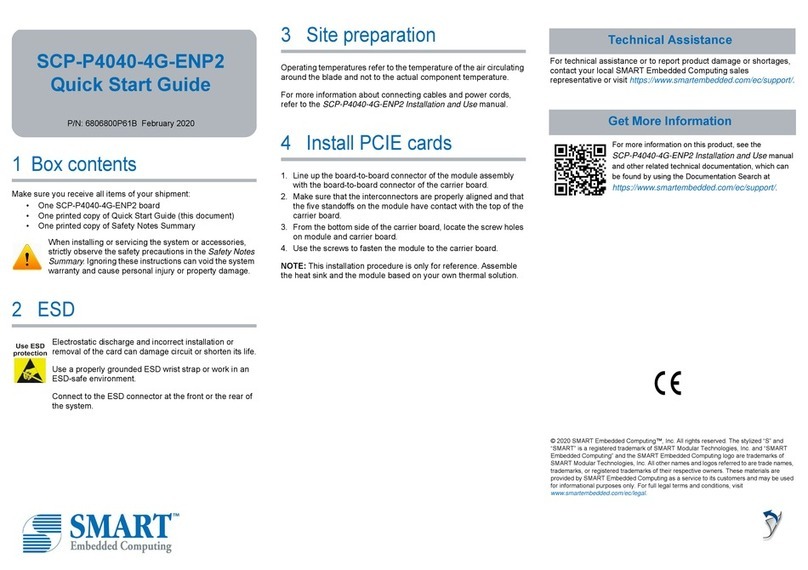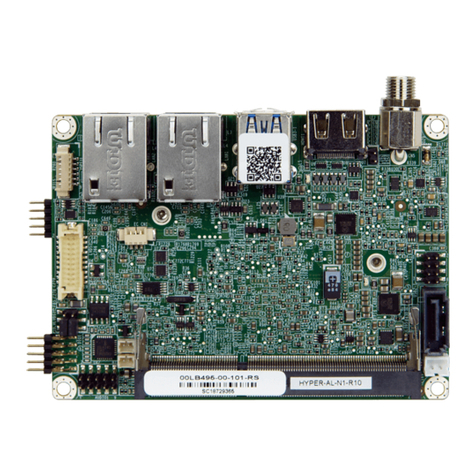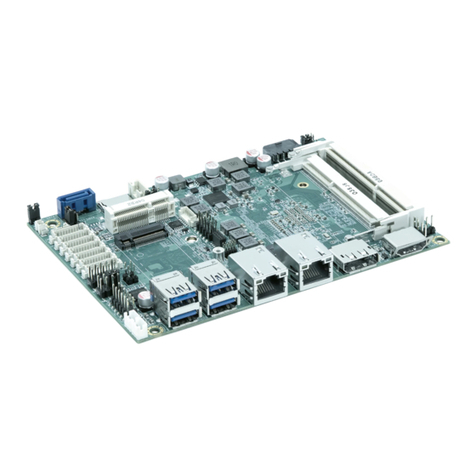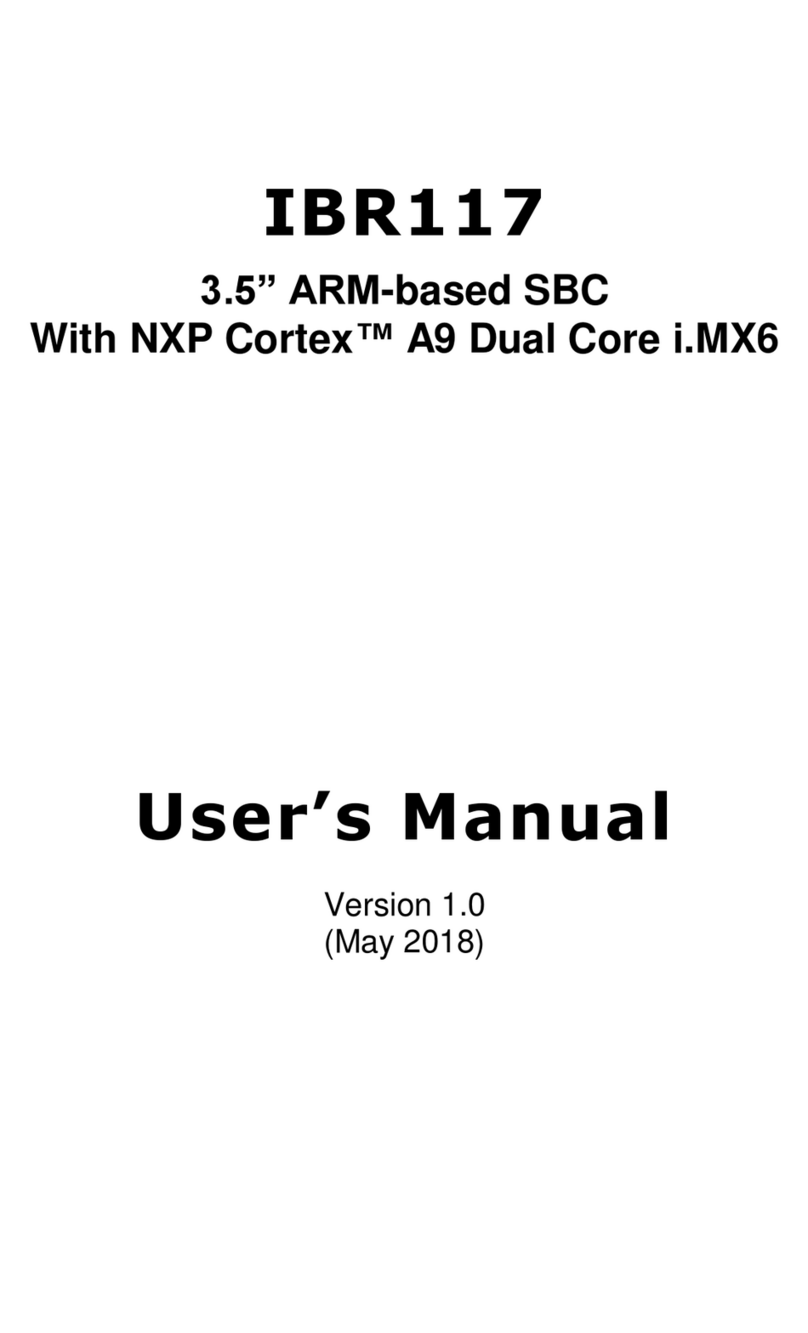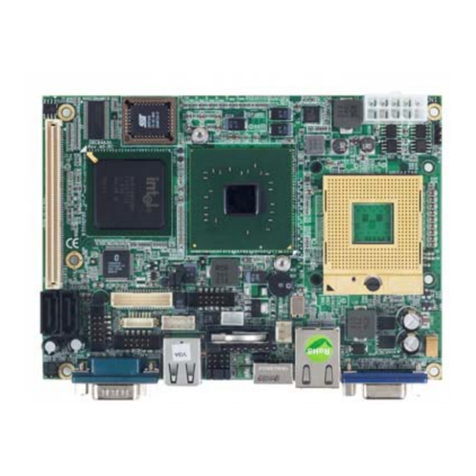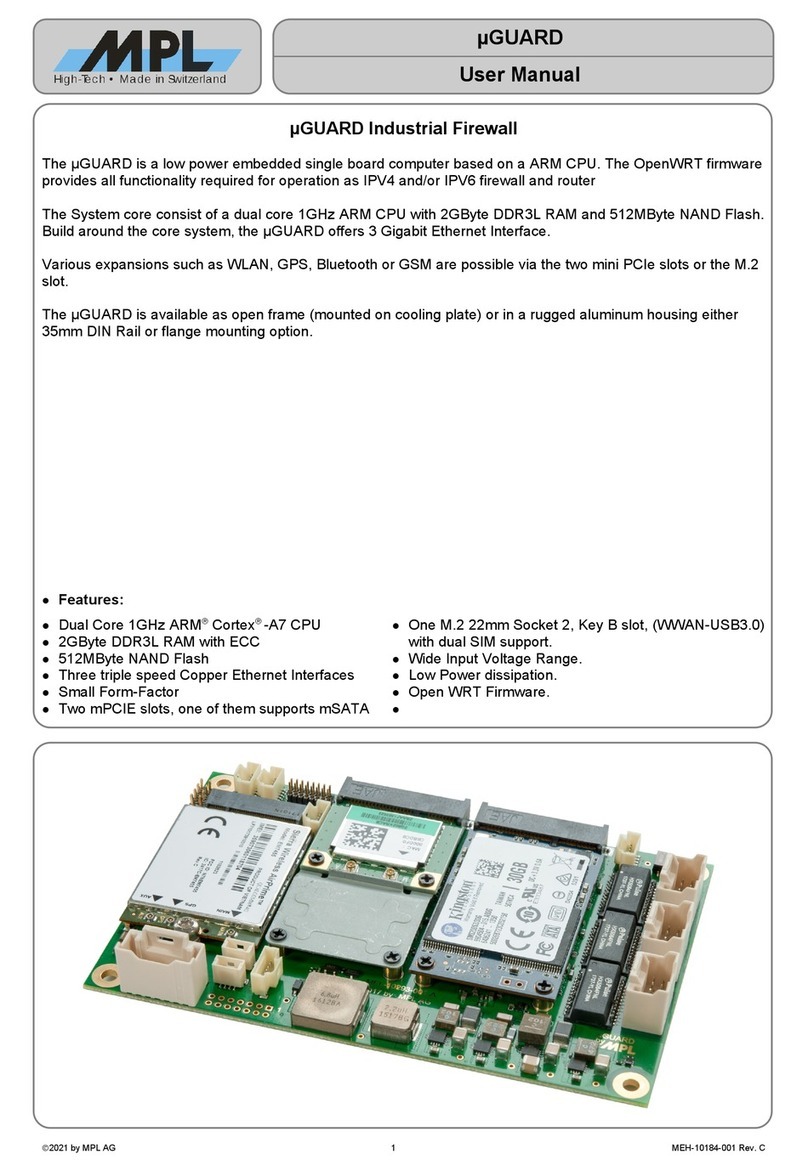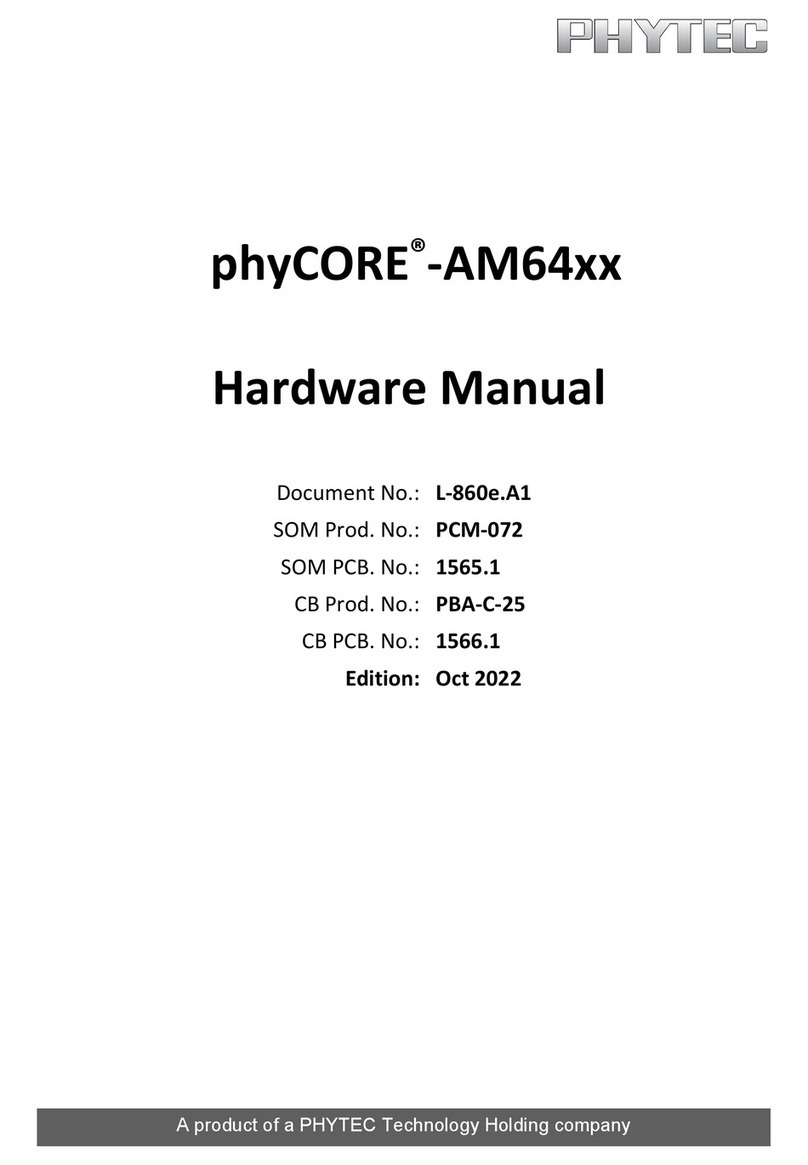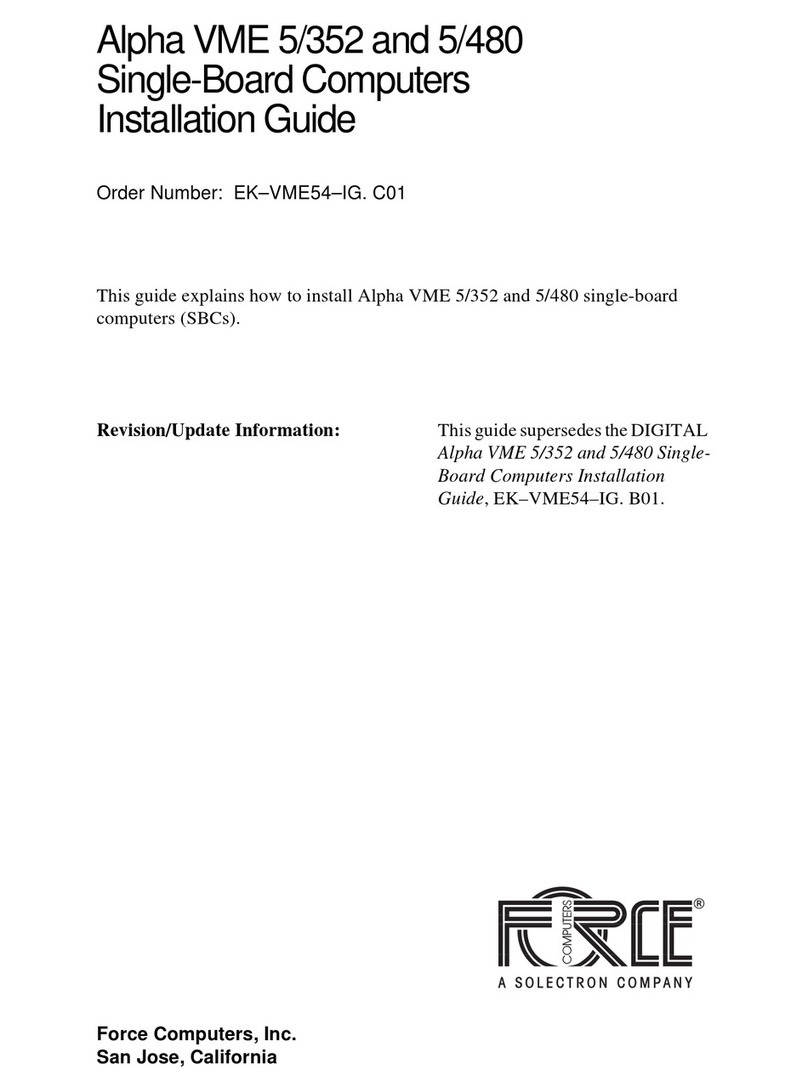Glitch Works R6501Q User manual

Glitch Works R6501Q/R6511Q SBC
GW-R65X1QSBC-1
User’s Manual and Assembly Guide
Revision 2, 2020-10-03
c
2020 Glitch Works, LLC
http://www.glitchwrks.com/
This manual is licensed under a
Creative Commons “Attribution-NonCommercial-ShareAlike 4.0” license.

Contents
1 Introduction 2
2 Configuration 2
2.1 ConfiguringConsoleSpeed................................. 3
2.2 ROMOptions........................................ 3
2.3 ProcessorSelection ..................................... 3
2.4 GlitchbusExpansion .................................... 4
3 Assembly 5
3.1 AssemblingtheR65X1QSBC ............................... 5
3.2 AssemblyChecklist..................................... 6
3.3 InsertSocketedICs..................................... 6
3.4 AssembleConsoleCable .................................. 7
3.5 Optional Glitchbus Expansion . . . . . . . . . . . . . . . . . . . . . . . . . . . . . . . 7
4 Initial Checkout and Testing 8
4.1 Troubleshooting....................................... 8
4.2 RepairandService ..................................... 8
5 Technical Notes 9
5.1 Port C and Board Control Register . . . . . . . . . . . . . . . . . . . . . . . . . . . . 9
5.2 PortAandSwitchRegister ................................ 10
5.3 MemoryMap ........................................ 10
6 Errata and Clarifications 11
6.1 ROMCompatibility..................................... 11
7 Parts List 12
7.1 Substitutions ........................................ 13
Assembly Drawing 14
Schematics 15
1

1 Introduction
The Glitch Works R6501Q/R6511Q (GW-R65X1QSBC-1) is a single-board computer (SBC) com-
patible with Rockwell’s R6501Q and R6511Q one-chip microprocessors (referred to as the R65X1Q)
in plastic QUIP (Quad Inline Package). The SBC is also compatible with the high speed A suffix
Rockwell parts. It includes the following features:
•Rockwell R6501Q, R6511Q, R6501AQ, or R6511AQ
•32 KB static RAM, FeRAM compatible
•32 KB ROM, EEPROM, or FeRAM in 4K pages, in-board programmable
•Serial console via onboard UART
•ROM paging and switch-out
•Debounced reset and power supply supervisory circuit
•Glitchbus expansion header
•Glitchbus I/O mapped as a 256 byte memory page at 0xEF00
The R65X1Q SBC includes a modified version of the eWoz monitor with customization for the
R65X1Q onboard UART and memory layout. With the addition of a serial terminal (or terminal
emulation software on a PC), the SBC provides a basic self-contained R65X1Q system. The SBC’s
ROM implementation is compatible with Glitch Works ROMFS, which allows for the storage of file
records in ROM. These records can be loaded from the monitor, or automatically selected by option
switches on reset/power-up. This also allows for in-board updates without overwriting the current,
known-good copy of a program.
Two of the onboard R65X1Q parallel I/O ports are brought out to 5x2 pin headers on 0.1” centers.
These ports are unused by the standard ROM software load and are available for user applications.
See the R6500 applications manual specific to the processor used for more information.
2 Configuration
The R65X1Q SBC includes a switch pack and several optional resistors for configuring system op-
tions:
Name Function
SW2 ROM write protect, ROMFS program select, bitrate selection
R1-R3, R6 Installed only for R6511Q/R6511AQ processors
For normal operation with standard ROM images, SW2 should have all switches set to the OFF
position.
Console bitrate is selected with SW2 positions 3 and 4. The default configuration, with SW2 positions
3 and 4 off will provide a 4800 bps console with a 1 MHz system clock, or a 9600 bps console with a
2 MHz system clock. Review notes in the following section concerning the selection of bitrates and
potential error in higher speed rates.
2

2.1 Configuring Console Speed
The address of the UART registers is fixed in the internal circuitry of the R65X1Q and cannot be
changed. The UART bitrate is divided from the main system clock using one of the onboard counters.
ROM images provided by Glitch Works, LLC use SW2 positions 3 and 4 to select the bitrate used for
the ROM monitor or other startup routines. The following table describes the possible configurations
available:
SW2-3 SW2-4 Clock Console UART Speed
OFF OFF 1 MHz 4800 bps
OFF ON 1 MHz 2400 bps
ON OFF 1 MHz 1200 bps
ON ON 1 MHz 300 bps
OFF OFF 2 MHz 9600 bps
OFF ON 2 MHz 4800 bps
ON OFF 2 MHz 2400 bps
ON ON 2 MHz 600 bps
Note that while it is possible to set a division ratio for 9600 bps at 1 MHz (19200 bps at 2 MHz), this
division ratio will produce a bitrate clock with excessive deviation from standard frequencies. Many
terminals and other serial-connected devices will have problems with the error introduced at these
bitrates; therefore, the SBC does not provide a user-configurable way to select them.
If a 9600 bps console UART speed is required, it is recommended that a 2 MHz system clock be
used. While Rockwell only specs the A suffix R6501AQ and R6511AQ for 2 MHz operation, internal
testing has shown good results with running non-A parts at 2 MHz. Operation is of course only
guaranteed at Rockwell’s published speeds.
Some serial equipment does not support operation at 4800 bps or operates unreliably at this speed.
If you’re experiencing problems with console output at 4800 bps, try selecting 2400 bps.
2.2 ROM Options
The R65X1Q SBC ROM occupies addresses 0xF000 - 0xFFFF. ROM is addressed in 4K pages, with
page control via Port C bits 0 through 2. Page control bits are set to 0x03 at reset and power-on.
Port C bit 3 controls ROM enable; when set, ROM is enabled, when cleared, ROM is disabled. This
bit is set at reset and power-on to allow ROM booting.
2.3 Processor Selection
Resistors R1 - R3 and R6 are installed only for R6511Q and R6511AQ processors, and are unnecessary
for R6501Q and R6501AQ processors. These resistors provide pull-ups to I/O lines used on the
SBC.
System clock frequency is determined by crystal Y1 and the internal division ratio of the R65X1Q
processor. Consult the R6500 family datasheet for the processor in use to determine crystal frequency
requirements.
3

2.4 Glitchbus Expansion
The R65X1Q SBC is expandable through a Glitchbus expansion header. Glitchbus is a generic 8-bit
bus intended to be processor-agnostic. As implemented on the R65X1Q SBC, the Glitchbus can
stack above or below the SBC using PC/104 style stacking headers. The R65X1Q SBC can also be
used with right-angle headers and a Glitchbus backplane.
The Glitchbus includes signals for separate memory and I/O addressing, which the R65X1Q proces-
sors do not support. To enable the use of I/O mapped Glitchbus boards with the R65X1Q SBC,
a 256 byte page of memory space from 0xEF00 - 0xEFFF has been reserved as the Glitchbus I/O
space.
4

3 Assembly
The R65X1Q SBC is designed to be easy to assemble for anyone with moderate soldering ability. It
is a moderately complex board and will typically require between one and three hours of assembly
time, depending on the skill of the assembler. The following tools will be required:
•Soldering iron, 20-40 W recommended, grounded tip
•Solder, 63/37 leaded solder recommended, Kester “44 Core” or similar
•Diagonal cutters or flush cutters
•Solder braid, solder sucker, or desoldering station, in the event errors are made
•Needle-nose pliers for bending component leads
•1/4 and 1/8 W resistor lead forms (optional)
This manual does not cover basic soldering technique. If you are new to soldering, we recommend the
Adafruit soldering guide and plenty of practice on a piece of protoboard before beginning assembly
of this kit. The Adafruit guide can be found at:
https://learn.adafruit.com/adafruit-guide-excellent-soldering
3.1 Assembling the R65X1Q SBC
If you purchased a full Glitch Works parts kit, we recommend completing all assembly sections, since
extra features can be disabled as needed. If supplying your own parts, you may choose which sections
to complete based on the functionality required.
Note that pin 1 is designated with a square pad for all ICs, resistor packs, switches, and most
connectors. Pin 1 is toward the top of the board, as seen from the front, for all ICs, switch packs,
and radial electrolytic capacitors. The component (front) side of the board is the side which contains
the white silkscreen legend. It is recommended to install components from shortest to tallest, which
makes assembly without an assembly vise or jig easier, assuming the board is flipped over and soldered
with the component side resting on a table top.
Some jumper headers and connector headers are press-fit and may require a bit of force or gentle
wiggling to install. This is normal and helps keep the headers in place when the board is flipped over
for soldering.
5

3.2 Assembly Checklist
Verify parts list against kit contents or builder-provided parts
Consult the assembly drawing for component locations and values
Bend all 0.01 µF bypass capacitors (yellow axial bead) – position 2 on a 1/8 W lead form
Install all 0.01 µF capacitors in positions marked C in assembly diagram
Bend four 4.7 kΩ resistors and install in their marked locations – position 1 on a 1/4 W lead
form
If using a R6511Q or R6511AQ processor, hairpin bend four 4.7 kΩ resistors and set aside
Install non-socketed DIP ICs at their marked locations. Do not install U1, U2, U3, U4, or U5
Install a 16-pin socket at U1
Install 28-pin sockets at U2, and U3
Install the Rockwell processor at U4 – sockets are not recommended for Rockwell QUIP pack-
age processors due to the force required for insertion and removal. Note that QUIP package
processors have a big notch at both ends, and a smaller off-center notch to indicate pin 1
Install 33 µF 35 V capacitor at C19, bend leads with needle-node pliers
Install micro tact pushbutton at SW1
Install 22 pF radial ceramic capacitor at C10 and C11
Install 10 nF radial ceramic capacitor at C3
Install resistor pack at RP1
Install DIP switch at SW2
Install five 22 µF 16 V radial electrolytic capacitors at C4 - C8
Install TO-92 DS1233 at U5
If using a R6511Q or R6511AQ processor, install four previously hairpinned 4.7 kΩ resistors at
R1 - R3, R6
Install two 5x2 pin headers at J2, J3
Install 2-pin Molex header at J4, observe orientation
Install 5-pin Molex header at J1, observe orientation
Install CPU clock crystal at Y1
3.3 Insert Socketed ICs
Insert MAX232 level shifter into socket at U1
Insert 28C256 EEPROM into socket at U2
Insert SRAM into socket at U3
6

3.4 Assemble Console Cable
Do note that the R65X1Q SBC console port uses EIA RS-232 signalling levels, and is not compatible
with USB TTL serial cables! If you are using a USB to serial cable, ensure that it uses EIA RS-232
levels before connecting it to the R65X1Q SBC.
Glitch Works parts kits include a DB25F connector for the R65X1Q SBC console cable, as well as a
one-foot pigtail terminated in a 5-pin Molex KK-100 connector. This pigtail connects to J1, CONSOLE.
Use the following table to build a console cable appropriate to your intended terminal:
J1 Pin DB25F DCE Pin DB25F DTE Pin Function
1 5 4 Request to Send
2 3 2 Transmit Data
3 2 3 Receive Data
4 4 5 Clear to Send
5 7 7 Signal Ground
J1 pin 4 (CTS) and pin 1 (RTS) are not used in the standard R65X1Q SBC configuration. Console
pigtails provided with Glitch Works parts kits omit both. These pins can be used if jumpered to
other I/O pins for software control. Consult the schematic for more information.
A serial light box will help debug potential serial wiring problems, we highly recommend the addition
of a light box to your toolkit if you regularly interface RS-232 equipment. Our personal favorite is
the IQ Technologies SmartCable SC821 Plus.
3.5 Optional Glitchbus Expansion
The R65X1Q SBC may be expanded via Glitchbus. The SBC’s form factor allows it to be used at
any position in a stacked Glitchbus configuration. It may also be used with a right angle header
and Glitchbus backplane. If using the R65X1Q SBC with a right angle header, the header must be
installed on the component side of the board.
If used in a stacking configuration, the R65X1Q SBC can provide power to the Glitchbus stack
through connector J4. Do not overload the pigtail or connector used for J4.
Right angle versions of J1 - J4 may be used, if desired. RESET switch SW1 may be a standard or
right angle mini tact switch. This configuration is especially convenient when the R65X1Q SBC will
be used in a Glitchbus stack, but will not be the topmost board.
7

4 Initial Checkout and Testing
Once the R65X1Q SBC is assembled, configure it as described in the “Configuration” section, starting
on Page 2. Make sure that all positions on SW2 are open.
Double-check all ICs for proper orientation, check all solder joints for cold joints or solder bridges.
Connect the power pigtail provided to a suitable regulated 5 V power supply capable of providing
at least 500 mA. Connect your serial terminal or computer to the console port. Apply power to
your system and press RESET. The eWoz sign-on message should be printed to the console, and eWoz
should respond to appropriate user input.
For more information on the version of eWoz included with R65X1Q SBC kits, see:
https://github.com/glitchwrks/ewoz r6501
4.1 Troubleshooting
If your R65X1Q SBC fails to come up, recheck all solder joints for cold joints, bridges, or missed pins
– this is by far the most common problem we’ve observed during assembly workshops. Recheck con-
figuration options. Ensure your serial terminal or terminal emulator software is properly configured
and that your cable is wired correctly (a RS-232 light box is very helpful here).
Verify that *BRESET is properly strobing during power-up and when pressing the RESET button
(SW1).
4.2 Repair and Service
If you purchased an assembled R65X1Q SBC from Glitch Works, LLC, your board is warranted to
work on arrival. If you have assembled a kit that fails to work, you may return it to Glitch Works,
LLC for evaluation, repair, and testing. For questions concerning returns or configuration, please
visit http://www.glitchwrks.com/ and click the “Contact” link.
Do note that while we will attempt to help those who have purchased used boards, there is no
warranty extended.
8

5 Technical Notes
5.1 Port C and Board Control Register
The R65X1Q SBC uses a portion of the onboard Port C parallel I/O port (0x0002) as a board control
register. Certain bits of Port C are used internally for “Full Address Mode,” while others are used
to control ROM operation. Port C is addressed at memory location 0x0002. The bits of Port C are
mapped as follows:
Port C Bit Function Notes
0 ROM Page Address, bit 0 Set on reset
1 ROM Page Address, bit 1 Set on reset
2 ROM Page Address, bit 2 Set on reset
3 ROM Disabled Set (ROM enabled) on reset
4 Unused
5 Unused
6 Address Bus A13 Not user controllable
7 Address Bus A14 Not user controllable
Bits 0 through 2 control the selected 4K page of ROM available at 0xF000. These bits are set on reset
so that the last page of ROM is available for booting. Writing to these bits immediately changes the
ROM page. Port C provides readback of these bits.
Bit 3 enables ROM when set, and disables ROM when clear. This allows unmapping ROM for use
of system memory at 0xF000. Writing a 0 to this bit clears it and immediately switches off ROM,
writing a 1 to this bit switches ROM in. The selected ROM page is not affected. Bit 3 is set (ROM
enabled) on reset. Its status can be read back through Port C.
Bits 4 and 5 are unused and can be jumpered to end user applications, if desired.
Bits 6 and 7 control address bus lines A13 and A14, respectively. These bits are used in the “Full
Address Mode” configuration of the R65X1Q processor, and are not available for user control as I/O
pins. See the R6500 family datasheet relevant to the chosen processor for more information.
9

5.2 Port A and Switch Register
The low six bits of the onboard Port A parallel I/O port (0x0000) are mapped to the upper six
positions of switch pack SW1. These bits are active high (a closed switch position reads as a binary
1). The upper two bits of Port C are used for the onboard UART and are not available as parallel
I/O pins. The bits of Port A are mapped as follows:
Port A Bit Function Notes
0 PA0, SW2-8 ROMFS record, bit 0, closed reads 1
1 PA1, SW2-7 ROMFS record, bit 1, closed reads 1
2 PA2, SW2-6 ROMFS record, bit 2, closed reads 1
3 PA3, SW2-5 ROMFS record, bit 3, closed reads 1
4 PA4, SW2-4 Bitrate selection, closed reads 1
5PA5, SW2-3 Bitrate selection, closed reads 1
6 UART Transmit Data
7 UART Receive Data
Bits 0 through 5 reflect the state of SW2 positions 8 through 3. A 1 in a given bit position corresponds
to a closed switch. These positions are labeled PA0 - PA5 in the silkscreen. PA0 - PA3 can be used
by Glitch Works software to select the ROMFS record to load into memory at reset. PA4 - PA5
are used by Glitch Works software to set the console UART bitrate, as described in Section 2.1,
“Configuring Console Speed.”
Bits 6 and 7 are used by the R65X1Q internal UART and are not available as parallel I/O pins.
5.3 Memory Map
The R65X1Q SBC operates in “Full Address Mode” and has the following memory map:
Address Range Contents
0x0000 - 0x0003 Parallel I/O ports
0x0004 - 0x000F Reserved (not usable)
0x0010 - 0x001F R65X1Q control registers
0x0020 - 0x003F Reserved (not usable)
0x0040 - 0x00FF R65X1Q internal RAM
0x0100 - 0x7FFF Static RAM, IC socket U3
0x8000 - 0xEEFF Glitchbus expansion memory space
0xEF00 - 0xEFFF Glitchbus expansion I/O space
0xFF00 - 0xFFFF Glitchbus expansion memory space, when ROM is disabled
0xFF00 - 0xFFFF 4K page of ROM, IC socket U2, when ROM is enabled
Memory occupied by the static RAM in socket U2 may be overlaid by external devices on the
Glitchbus using the *BMASK signal.
Consult the Rockwell R6500 family datasheet specific to the processor in use for more information
about onboard I/O and memory devices.
10

6 Errata and Clarifications
6.1 ROM Compatibility
The ROM socket at U2 is compatible with JEDEC standard 32K x 8 static RAM, Ferroelectric
RAM (FeRAM), and 28C256 EEPROMs. It may not be compatible with some manufacturers’ UV
EPROMs, such as the common 27256 EPROM.
11

7 Parts List
If you purchased a full Glitch Works parts kit, be sure it includes the following:
2x 22 pF radial ceramic capacitor
10x 0.01 µF axial ceramic capacitor (yellow bead)
1x 10 nF 16 V radial ceramic capacitor
1x 33 µF 35 V axial electrolytic capacitor
5x 22 µF 16 V radial electrolytic capacitor
4x 4.7 kΩ 1/4 W resistor (see above note)
1x 220 Ω x 9 SIP resistor packs (see note above)
1x 4 MHz crystal
1x Rockwell R6501Q CPU
1x 28C256 EEPROM, preloaded with R65X1Q SBC firmware
1x JEDEC 62256-type 32K x 8 static RAM
1x 74LS04 hex inverter
1x 74LS10 triple 3-input NAND gate
1x 74LS20 dual 4-input NAND gate
3x 74LS245 transceiver
1x 74LS688 magnitude comparator
1x MAX232 RS-232 level shifter
1x DS1233 EconoReset
1x 8-position DIP switch
1x mini tact pushbutton switch
2x 5x2-pin headers
1x 2-position Molex KK-100 header
1x 5-position Molex KK-100 header
2x 28-pin IC socket
1x 16-pin IC socket
1x Power pigtail
1x RS-232 console pigtail
1x DB25F connector
12

7.1 Substitutions
The following substitutions may be made if you have purchased a bare board and are supplying your
own parts, or in a full Glitch Works parts kit:
•Any compatible 7400 series family logic ICs may be used (for example, a 74LS04 in the parts
list may be shipped as a 7404, 74S04, 74F04, 74LS04, 74ALS04, or 74HCT04)
•All 4.7 kΩ resistors on the GW-R65X1QSBC-1 are pull-up or pull-down resistors, and may be
any value from 2.2 kΩ to 10 kΩ, even though they are indicated as 4.7 kΩ on the assembly
drawing
•Resistors may be of varying precision and body type
Additionally, see Section 2.3, “Processor Selection” for information on choosing a processor and
crystal combination for user-supplied parts.
13


1 2 3 4 5 6 7 8
1 2 3 4 5 6 7 8
A
B
C
D
E
A
B
C
D
E
Date: 2020-09-28
KiCad E.D.A. kicad 5.1.2 Rev: 2Size: USLedger Id: 1/1
Title: R65X1Q Single Board Computer
File: gw-r65x1qsbc-1.sch
Sheet: /
Glitch Works, LLC
J. Chapman
GW-R65X1QSBC-1
BD0
BD1
BD2
BD3
BD4
BD5
BD6
BD7
BA7
BA6
BA5
BA4
BA3
BA2
BA1
BA0
BA15
BA14
BA13
BA12
BA11
BA10
BA9
BA8
*BRESET
*BMASK
*BSTART
BCLOCK
BIO**M
BR**W
*BINT
Glitchbus Expansion Connector
BREADY
Mounting Holes
GND
W4
MTG
W3
MTG
W2
MTG
W1
MTG
A->B
1
B7 11
B6 12
B5 13
B4 14
B3 15
B2 16
B1 17
B0 18
CE
19
A0
2
A1
3
A2
4
A3
5
A4
6
A5
7
A6
8
A7
9
U12
74LS245
*EXTERNAL_BUS
BD0
BD2
BD4
BD6
BD1
BD3
BD5
BD7
D0
D2
D4
D6
D1
D3
D5
D7
*RD
C2
C
C16
C
C17
C
C9
C
C18
C
C19
33uF
GND
VCC
Y1
4 MHz
LOGIC RS232
C1+
1
T2IN
10
T1IN
11
R1OUT
12 R1IN 13
T1OUT 14
GND
15 VCC 16
VS+ 2
C1-
3
C2+ 4
C2- 5
VS- 6
T2OUT 7
R2IN 8
R2OUT
9
U1 MAX232
C4
CP
C6
CP
C7 CP
C8
CP
C5
CP
GND
GND
VCC
VCC
TxD
RxD
*RTS
*CTS
EIATX
EIARX
EIACTS
EIARTS
C1
C
Decoupling and Bypass
Data Buffer
RS-232 Level Translation and Buffering
PD3 1
A10
10
A9
11
A8
12
A7
13
A6
14
A5
15
A4
16
A3
17
A2
18
A1
19
PD4 2
A0
20
SYNC
22
*NMI
23
PB7 24
PB6 25
PB5 26
PB4 27
PB3 28
PB2 29
PD5 3
PB1 30
PB0 31
PA7 32
PA6 33
PA5 34
PA4 35
PA3 36
PA2 37
PA1 38
PA0 39
PD6 4
R**W
40
XTLO
41
XTLI
42
VRR
43
PHI2
45
DB7
46
DB6
47
DB5
48
DB4
49
PD7 5
DB3
50
DB2
51
DB1
52
DB0
53
PC0 54
PC1 55
PC2 56
PC3 57
PC4 58
PC5 59
*RES
6
PC6 60
PC7 61
PD0 62
PD1 63
PD2 64
A15
7
A12
8
A11
9
U4
R6501Q
VCC
BA7
10 BA8
11 BA9
12 BA10
13 BA11
14 BA12
15 BA13
16 BA14
17 BA15
18
*BMASK 21
BCLOCK 22
*BSTART 23
BIO**M 25
*BRESET 26
BR**W 27
*BINT 28
BA0
3BREADY 30
BD0 31
BD1 32
BD2 33
BD3 34
BD4 35
BD5 36
BD6 37
BD7 38
BA1
4BA2
5BA3
6BA4
7BA5
8BA6
9
J5
GLITCHBUS
A7
A6
A5
A4
A3
A2
A1
A0
A15
A14
A13
A12
A11
A10
A9
A8 TxD
RxD
A14
1
A0
10
D0 11
D1 12
D2 13
D3 15
D4 16
D5 17
D6 18
D7 19
A12
2
*CE 20
A10
21
*OE 22
A11
23
A9
24 A8
25
A13
26
*WE 27
A7
3A6
4A5
5A4
6A3
7A2
8A1
9
U3
62256
A12
A14
A13
D0
D2
D4
D6
D1
D3
D5
D7
A14
1
A0
10
D0 11
D1 12
D2 13
D3 15
D4 16
D5 17
D6 18
D7 19
A12
2
*CE 20
A10
21
*OE 22
A11
23
A9
24 A8
25
A13
26
*WE 27
A7
3A6
4A5
5A4
6A3
7A2
8A1
9
U2
32K ROM
A7
A6
A5
A4
A3
A2
A1
A0
RPA0
A11
A10
A9
A8
RPA2
RPA1
D0
D2
D4
D6
D1
D3
D5
D7
C11
22p C10
22p
GND
GND
1*RESET 2
VCC
3U5
DS1233
C3
10n
VCC
GND
GND
*BRESET
*BRESET
A7
A6
A5
A4
A3
A2
A1
A0
A11
A10
A9
A8
RPA0
RPA2
RPA1
3
4
5
6
U6B
74LS10 *RAM_CE
*ROM_CE*RAM_CE
ROM_ENA
A15
PHI2
PHI2
BR**W *ROM_WR
*RD *RD
1 2
U7A
74LS04 5 6
U7C74LS04
3 4
U7B
74LS04
89 U7D
74LS04
1011 U7E
74LS04
1213 U7F
74LS04
*RD
BR**W
R**W
R**W
A->B
1
B7 11
B6 12
B5 13
B4 14
B3 15
B2 16
B1 17
B0 18
CE
19
A0
2
A1
3
A2
4
A3
5
A4
6
A5
7
A6
8
A7
9
U11
74LS245
A->B
1
B7 11
B6 12
B5 13
B4 14
B3 15
B2 16
B1 17
B0 18
CE
19
A0
2
A1
3
A2
4
A3
5
A4
6
A5
7
A6
8
A7
9
U9
74LS245
*BMASK
*BINT
VCC
1
2
4
5
6
U10A
74LS20
A12
A14
A13
A15 PHI2
ROM_ENA
*ROM_CE
1
12
13
2U6A
74LS10
GND
D0
D2
D4
D6
D1
D3
D5
D7
A7
A6
A5
A4
A3
A2
A1
A0
A12
A11
A10
A9
A8
A15
A14
A13
BA7
BA6
BA5
BA4
BA3
BA2
BA1
BA0
BA15
BA14
BA13
BA12
BA11
BA10
BA9
BA8
G
1
P4
11
R4
12
P5
13
R5
14
P6
15
R6
16
P7
17
R7
18
P=R 19
P0
2
R0
3
P1
4
R1
5
P2
6
R2
7
P3
8
R3
9
U8
74LS688
A12
A14
A13
A11
A10
A9
A8
A15
GND
VCC
BIO**M
*BSTART
PHI2 BCLOCK
C15
C
C14
C
C13
C
C12
C
*ROM_CE
*RAM_CE
*EXTERNAL_BUS
PA0
PA1
PA2
PA3
PA4
PA5
1
10
11
12
13
14
15
16
2
3
4
5
6
7
8 9
SW2
OPTS
1
10
2
3
4
5
6
7
8
9
RP1
220R
PA0
PA1
PA2
PA3
PA4
PA5
VCC
GND
VCC
1
10
2
3 4
5 6
7 8
9
J2
PORT D
PD0
PD1
PD2
PD3
PD4
PD5
PD6
PD7
PD0 PD1
PD2 PD3
PD4 PD5
PD6 PD7
GND
PB0
PB1
PB2
PB3
PB4
PB5
PB6
PB7
PB0 PB1
PB2 PB3
PB4 PB5
PB6 PB7
1
10
2
3 4
5 6
7 8
9
J3
PORT B
GND
*ROM_WRBR**W
R4
4.7K
VCC
1
2
3
4
5
J1
CONSOLE
EIATX
EIARX
EIACTS
EIARTS
GND
1
2J4
POWER
10
11
8
9
U6C
74LS10
10
12
13
8
9
U10B
74LS20
GND Spare Gates
Power-On Reset and Supervisor
I/O Port Breakouts
External RAM 0x0000 - 0x7FFF EEPROM 0xF000 - 0xFFFF
Available in 4K segments
Options Switches
EEPROM Write Protect
*BSTART Generator and Clock Buffer
External Bus Control
I/O Page Decoder
Activates the I/O state of BIO**M from
0xEF00 - 0xEFFF
*RD and BR**W Generator and Buffer
ROM Select Logic
Places 4K segment of EEPROM at 0xF000
External RAM Select Logic
Processor and Clock Generation
Address Buffering
SW1
RESET
R1
4.7K
R3
4.7K
R2
4.7K
VCC
R6
4.7K
R7
4.7K
VCC
R8
4.7K
R5
4.7K
This manual suits for next models
2
Table of contents
Popular Single Board Computer manuals by other brands

VMIC
VMIC VMICPCI-7611 product manual

Freenove
Freenove Ultimate Starter Kit manual
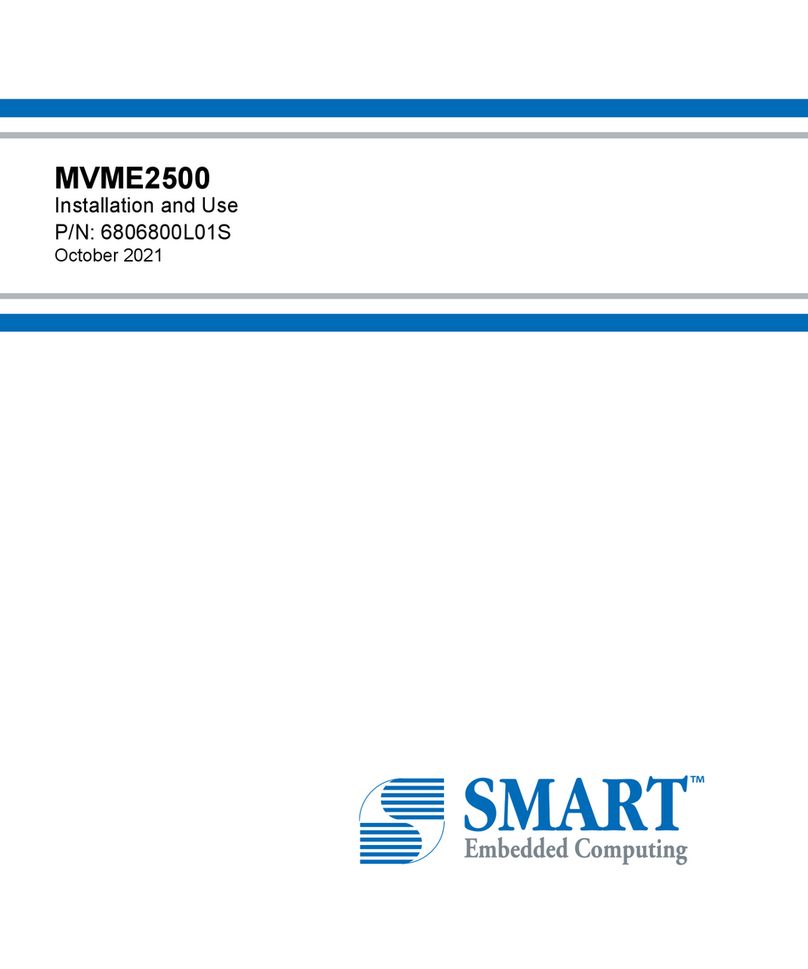
SMART Embedded Computing
SMART Embedded Computing MVME2500 Installation & use
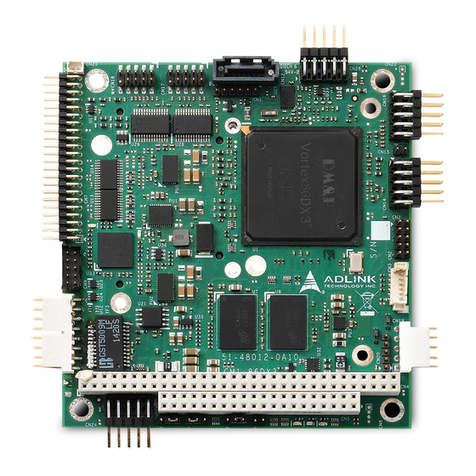
ADLINK Technology
ADLINK Technology CM1-86DX3 Technical reference
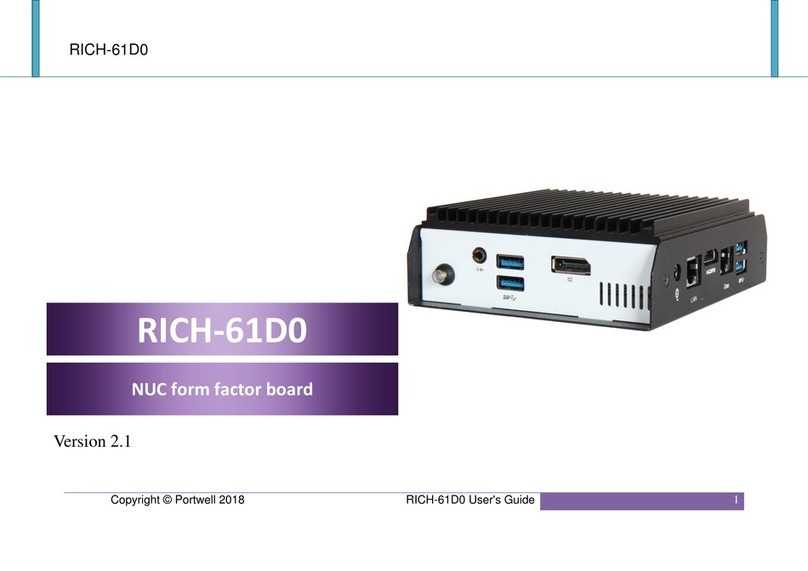
Portwell
Portwell RICH-61D0 user guide
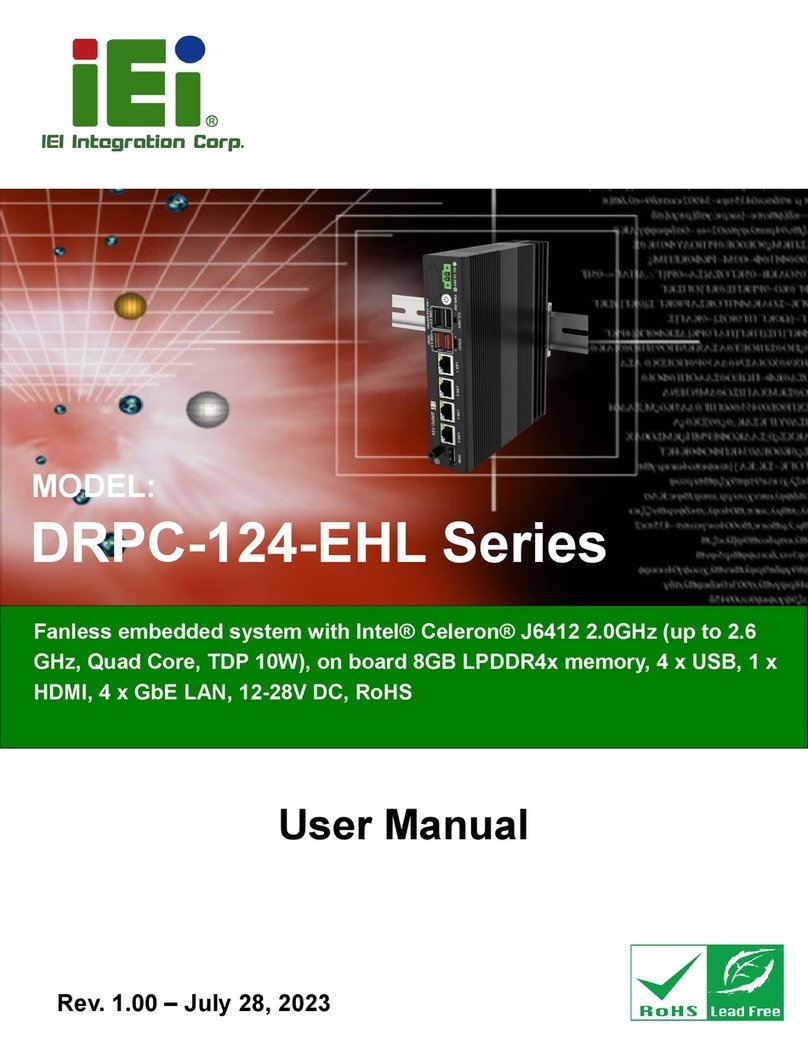
IEI Technology
IEI Technology DRPC-124-EHL Series user manual
